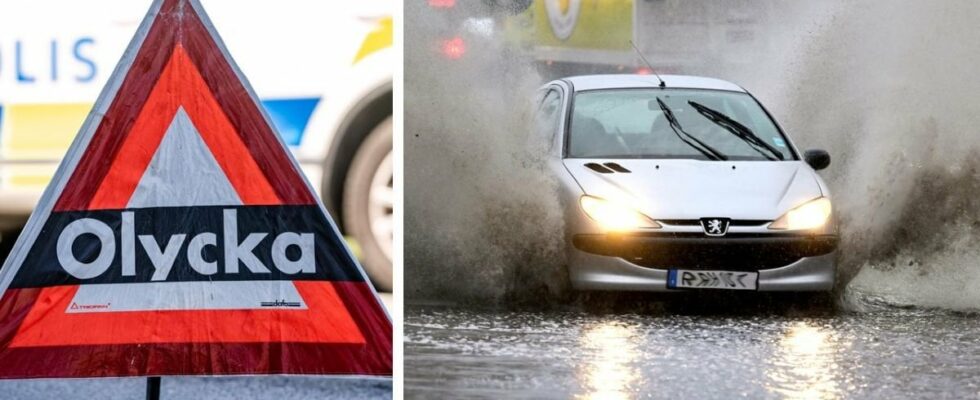Hydroplaning is a phenomenon which means that there is so much water on the road surface that the tread pattern of the tires cannot sweep it away fast enough.
Then the tires start to flatten out on the surface of the water instead and lose contact with the road surface. The car then becomes impossible to control.
In response to a reader question gives Technology World expert Mattias Rabe their tips on how to act when hydroplaning.
Have good tires
According to Mattias Rabe, the most important protection against aquaplaning is to make sure that you have good tread depth on the tires, as this is what will help push the water away from the contact surface with the road.
By law, a summer tire must have a tread depth of at least 1.6 millimeters, while a winter tire must have a tread depth of at least 3 millimeters. When it comes to aquaplaning, however, deeper tire patterns are better, and the expert believes that 1.6 millimeters is way too little.
The pattern depth also affects the braking distance on wet surfaces.
According to the expert, it is also important that the tires are inflated with the correct air pressure.
DON’T MISS:
The cars with a ridiculously high malus – SEK 200,000 in tax
Common mistakes in autumn: “Risk of corrosion damage” on the car
Adjust the speed
According to the expert, when there is a lot of water on the road, it is also important to adjust the speed.
A higher speed means that the tire’s contact surface with the road is reduced, but also that the water forms a larger embankment in front of the tire – which gives the tire unwanted lifting force.
Reducing your speed not only lowers the risk of hydroplaning, but also reduces the consequences of hydroplaning if you do happen to do so.
If you want to avoid aquaplaning, you should avoid standing water – Photo: Björn Larsson Rosvall Avoid standing water
Another effective way to avoid aquaplaning, according to the expert, is to simply avoid driving through the deepest water on the roadway.
Swedish roads often have deep ruts in the roadway where most cars drive, which have been worn up by studded tires, high volumes of traffic and heavy traffic. When it rains, water easily collects in the wheel tracks, and to avoid aquaplaning, it can therefore be good to try to avoid driving in them.
Driving through deep bodies of water that have formed in depressions is also to be avoided. If it cannot be avoided, it is good to reduce the speed.
Driving in the wheel tracks of the car in front can be a good method, as the water is already displaced there.
That’s how you stay in control
Should you, despite your precautions, suffer aquaplaning, there is unfortunately not much to do before the tires regain contact with the asphalt, according to Mattias Rabe. The process also usually goes very quickly.
What can be done is to avoid violent movements with the steering wheel, and let off the gas in the hope that the speed will decrease. On a manually-shifted car, it can also be smart to press down on the clutch pedal.
When the tires regain grip with the road, it can be with a strong jerk, if the car has started to turn in relation to the direction of travel.
In order to avoid the car pulling away in an unwanted direction, the advice from the expert is to then steer in the direction you want to travel. Then, in most cases, the car’s anti-skid system will help the driver to lift the skid and make the car stabilize in the direction the front wheels are pointing, according to the expert.
DON’T MISS:
New prices for petrol and diesel
Smockan: Retroactive penalty tax for 800 car owners
